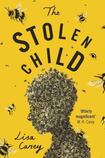
Irish folklore and mythology provide the backbone to this absorbing novel from US author Lisa Carey, who spent the early part of her career living on Inishbofin. Set on a similarly remote fictional island off the west coast of Ireland in the late 1950s, it charts the slow evacuation of the natives from their rugged retreat to the mainland as modernity encroaches upon the country.
St Brigid’s demise has been inevitable. Its history is a history of departures after all. For generations, the young “had trickled away, for storms, war, emigration, careers . . . for marriage and school. For life.” Only those with no prospects – women and children, for the most part – stayed. When government representatives offer the remaining residents the opportunity to settle on the mainland, it seems like an opportunity not to be missed. However, the islanders are divided on the matter. Twin sisters Rose and Emer, for example, have opposing views.
Rose, the elder by a matter of minutes, won’t even leave her home place to give birth to her latest set of twins in the comfort of the mainland hospital. Emer, meanwhile, would happily destroy every homestead left if it meant that she could escape the island’s oppressive history and her terrifying conviction that her son will be stolen by fairies on his seventh birthday. For Emer, island life “is like being slowly drowned, held down on a rock and left for the tide to come in”.
Malignant forces
To an outsider, Emer’s conviction that her son is a changeling seems like the stuff of fairy tale, but Emer herself has been touched by the malignant forces of the spirit world. As a girl she longed to be chosen by the fairies, who women brought to life around the fireside every night in sagas that lasted through the seasons. One summer she found a portal to their world in a beehive, but she was rejected, and she lost her eye, and some would say a bit of her soul, in her brief flirtation with the otherworld.
Now she is as feared as a witch by her fellow islanders, who shrink even from her touch. She is a “snarled-up fist of a woman”, the type of person who is capable “of ripping away what is precious should you look at her the wrong way”.
The Stolen Child takes inspiration from WB Yeats's poem of the same title, which narrates the eerie seduction of a "solemn-eyed" human by fairies determined to save it from life's sorrows. For her atmospheric and multilayered story, Carey draws on a wealth of supernatural legends pertaining to the Celtic goddess of Brigid, who is both pagan patron of the island and a figure that the islanders honour in more traditional Catholic practice. As Carey writes, Brigid "wasn't a Christian saint, but a Celtic one – born in the doorway between two worlds, named for a goddess, suckled on the milk of fairies, ordained as a bishop – she was a woman who feared nothing, with both God and the good people on her side."
The doubleness of the islanders’ belief enables Carey to slip easily between domestic mundanity and a more magical alternative reality, but it also expresses the ambiguity of a community torn between two worlds, tradition and modernity.
Looking for a miracle
It is the arrival of an American woman, Bridget, who comes to the island looking for a miracle, that forces the islanders to decide. Bridget, whose own mother was branded a witch and driven from the island, comes to St Brigid’s looking for a miracle from her namesake. With her openness and unconventional beliefs, she brings a breath of fresh air to the island, offering residents an “option to become someone else altogether”, but she also drags the women she seduces towards something far more primitive and more dangerous than their own sexuality.
It is a brave author that hinges her story upon two equally unlikable characters, but in pitting the cruel Emer and the bloody-minded Brigid against each other, she manages to reveal both their vulnerabilities and their doggedness.
The Stolen Child is not the first time that Carey has plumbed the depths of Irish mythology for her work. Her first novel, The Mermaids Singing, charts three generations of Irish-American life on another fictional island off the west coast of Ireland, while In the Country of the Young is set on the fictional Tiranogue, off the coast of Maine, where a group of Irish refugees were shipwrecked while fleeing the Famine. The island setting and supernatural backdrop allow Carey to explore the extremity of human behaviour away from the main current of modern life and to hone her sensuous, lyrical style away from the pressures of a contemporary idiom. Her distinctive voice shines throughout The Stolen Child, which casts a spell upon the reader in its opening prologue and does not let go until the final devastating moments.
And yet The Stolen Child is not just about the dangers and powers of superstition. "Who's to say that women can't be as violent and merciless as men? Or fairies. Or God himself," Carey asks as the story reaches its terrible conclusion. After all, is the supernatural not merely a veil for our unnameable urges and desires?
Sara Keating is a critic












